Impact of Different Weed Removal Timings on Corn Yields in Canandaigua, NY
December 20, 2023
TRIAL OBJECTIVE
The negative impact of weeds on multiple crop yields has been demonstrated for multiple years. The term Critical Period of Weed Control (CPWC) is defined as the period in the growth cycle of a crop when weeds must be controlled to help avoid or reduce the potential for yield loss. The time when weeds must be controlled is a moving target that depends on multiple factors such as seedling emergence and vigor, soil moisture, nutrient availability, weed seed bank, tillage practices, and farm equipment availability. The objective of this trial was to quantify the yield loss due to delayed weed control.
RESEARCH SITE DETAILS
- This study was planted in May 2023 at the Bayer Market Development Research Farm located in Canandaigua, New York. Planting and harvest details are described below.
- The trial was a Randomized Complete Block Design (RCBD) with four replications.
- Individual plots where 15 feet wide by 55 feet long. The four center rows were sprayed, and the two outer rows were left as buffers.
- Plots were planted in 30-inch rows with a four-row John Deere planter equipped with Precision Planting® vSet® meters.
- 200 lb/acre of nitrogen was split applied with 60 lb/acre applied as a 2x2 starter and 140 lb/acre broadcast applied at V4 stage.
- 25 lb/acre phosphate was applied as a 2x2 starter, and 140 lb/acre potassium was preplant applied.
- A 90-Day Relative Maturity (RM) corn product was selected from the Bayer offering portfolio.
- Weed management consisted of five treatments, four different weed control timings plus an untreated check. Products, rates, and timing are described on Table 1.
- Plots were sprayed using a CO2 pressurized backpack sprayer set to deliver 20 gallons/acre.
- Average yield (bu/acre) determined by harvesting with a Kincaid 8-XP small plot combine using the two center rows of the plot to collect weight, moisture content, and test weight data.
- All yield data was corrected to 15.5% moisture content.

Table 1. Treatments, rates, and timing

Table 2. Weather data

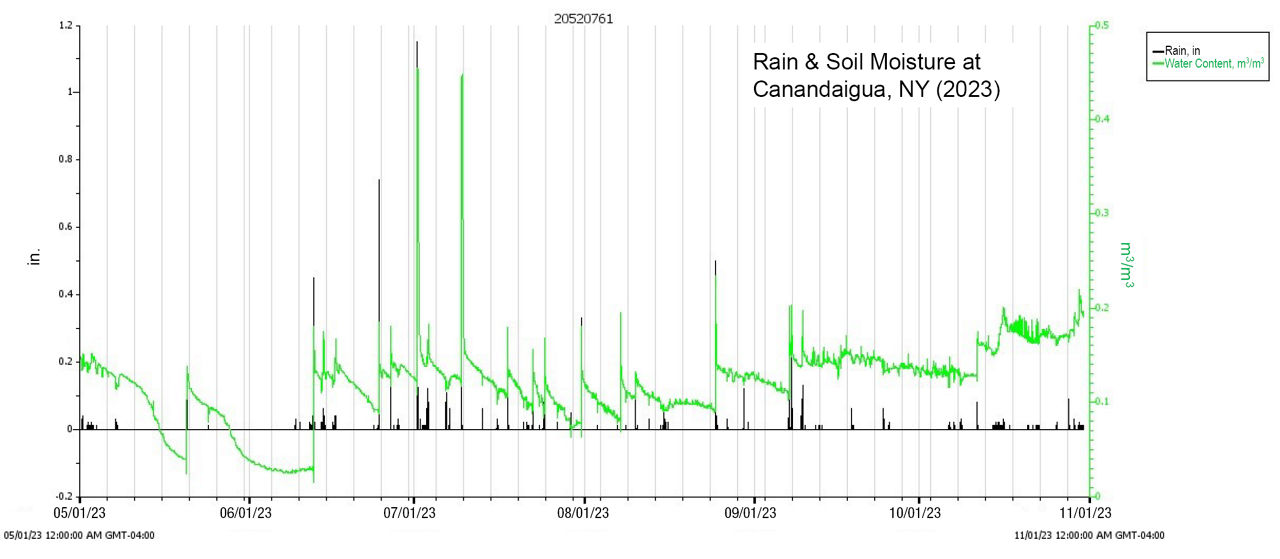
UNDERSTANDING THE RESULTS
- The weeds present across the plots were a combination of crabgrass (Digitaria spp.), fall panicum (Panicum dichotomiflorum), foxtails (Setaria spp.), pigweeds (Amaranthus spp.), common lambsquarters (Chenopodium album) and velvetleaf (Abutilon theophrasti).
- In this trial, all weed management treatments provided great to excellent weed control. Grass breakthroughs were observed on the PRE emergent treatment once the crop started to senesce (Figures 2, 3, 4 and 5).
- The Late POST emergent treatment was changed from the original weed management treatment used in the PRE, Early POST, and POST weed management treatments because corn had exceeded the labeled required height (Figure 7).
- The highest yielding treatment was the PRE emergent treatment yielding an average of 255.3 bushels/acre. The longer weed control was delayed, the higher the impact on yield loss was (Table 3).
- With no weed management, the untreated plots (Figure 6) yielded an average of 189.6 bushels/acre. Timely rains, mild temperatures, (Table 2 and Figure 1) and no observed deficit of soil water content (Figure 1) past the first month of planting plus an adequate nutrient management program can be attributed to the surprising yields.
- Although test weight was low at harvest, it may have increased by about 55 to 56 lb/bu if the corn was allowed to dry in the field for a longer time as observed in other plots that had the same product. It is important to note that there was a reduction of over one pound of test weight/bu on the untreated plots (Table 3).
Table 3. Harvest parameters

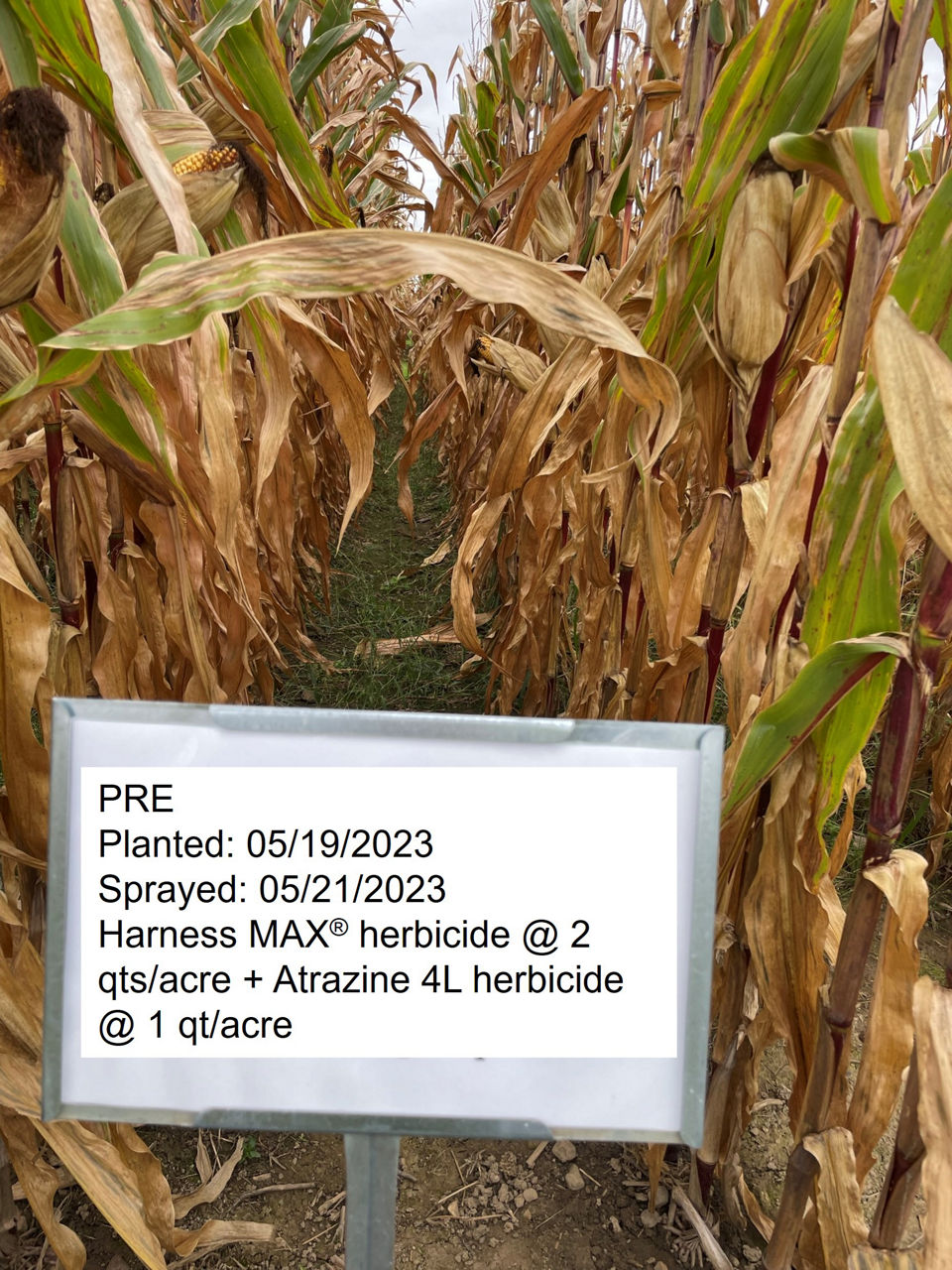


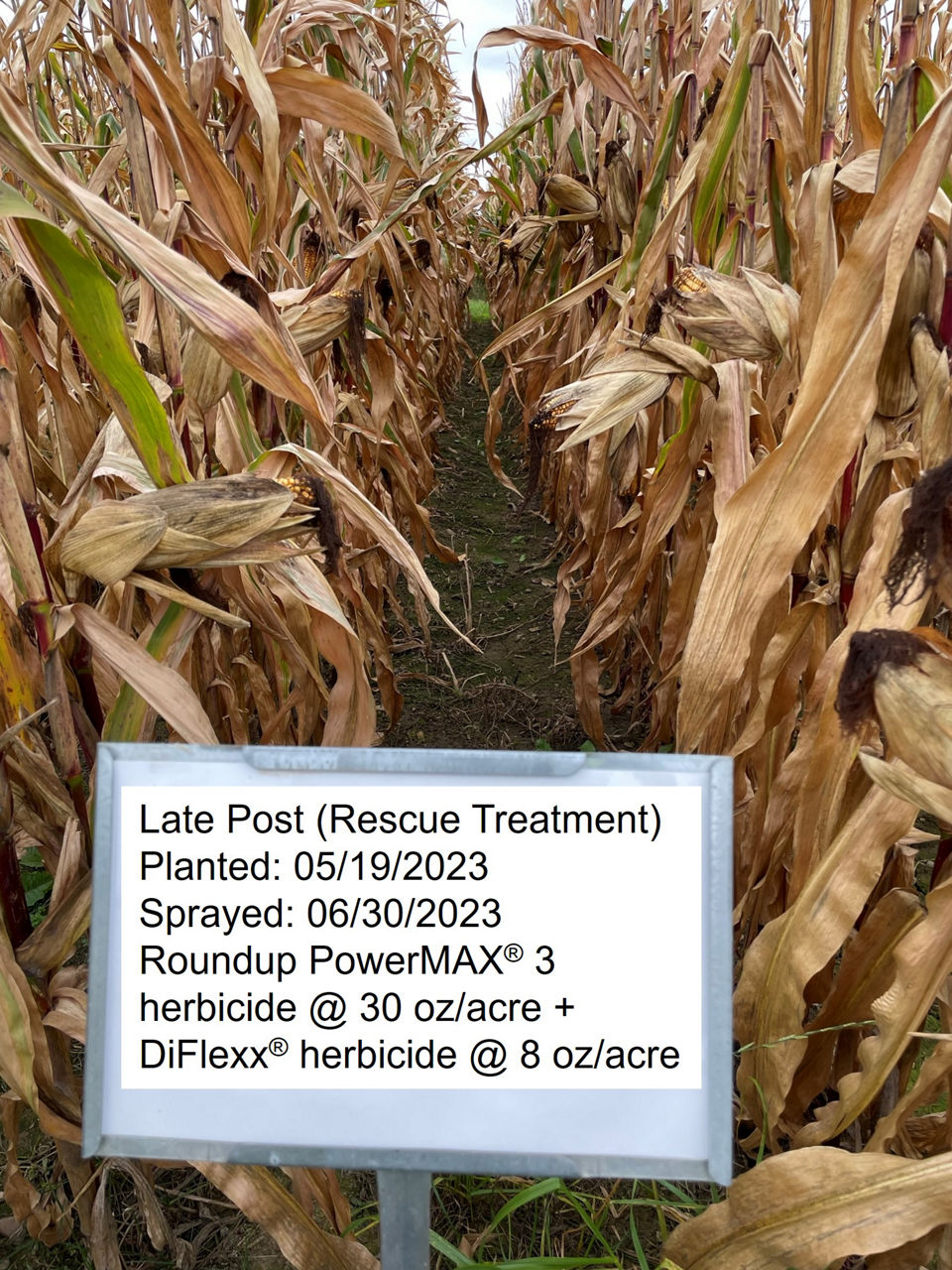
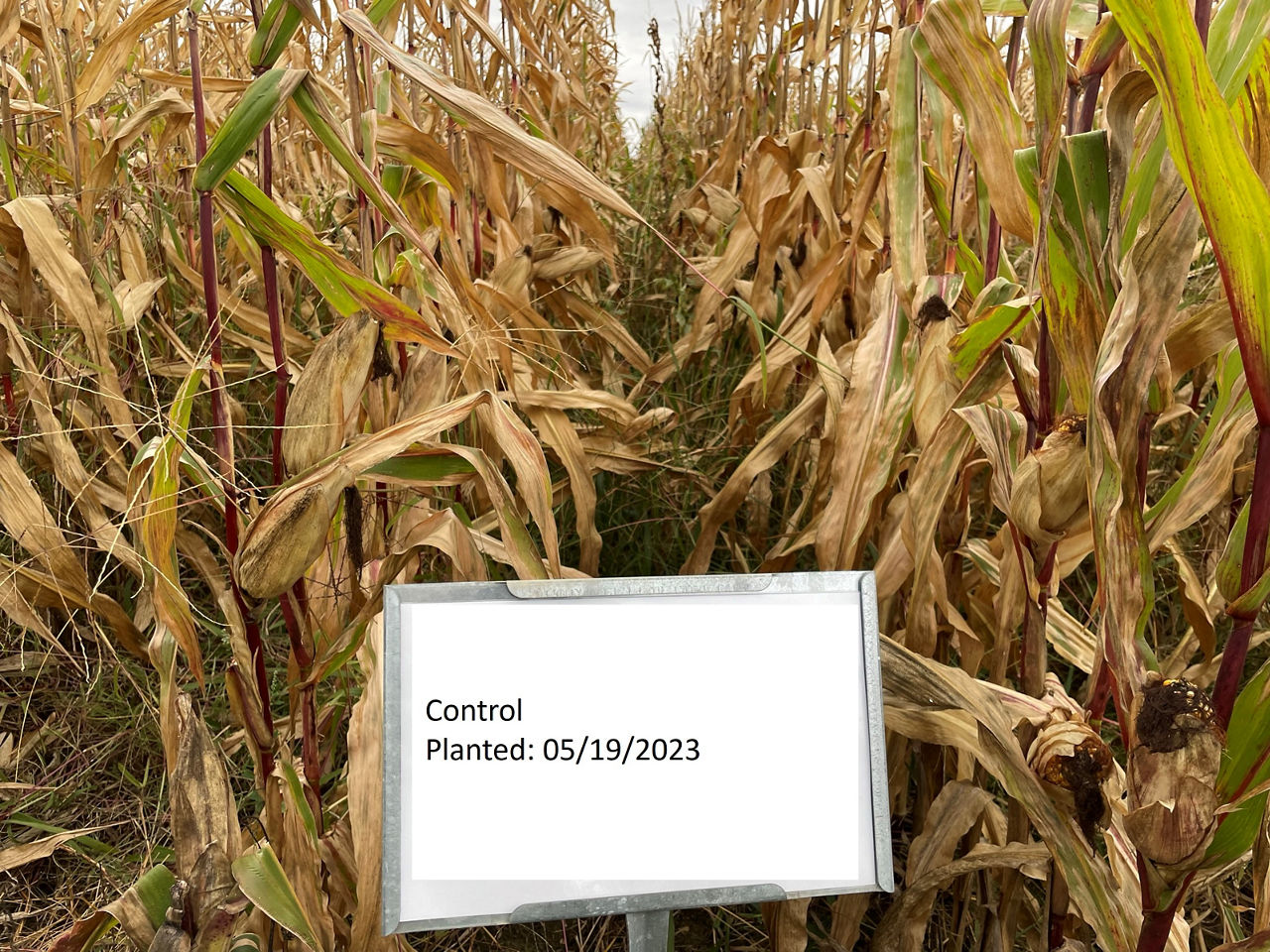
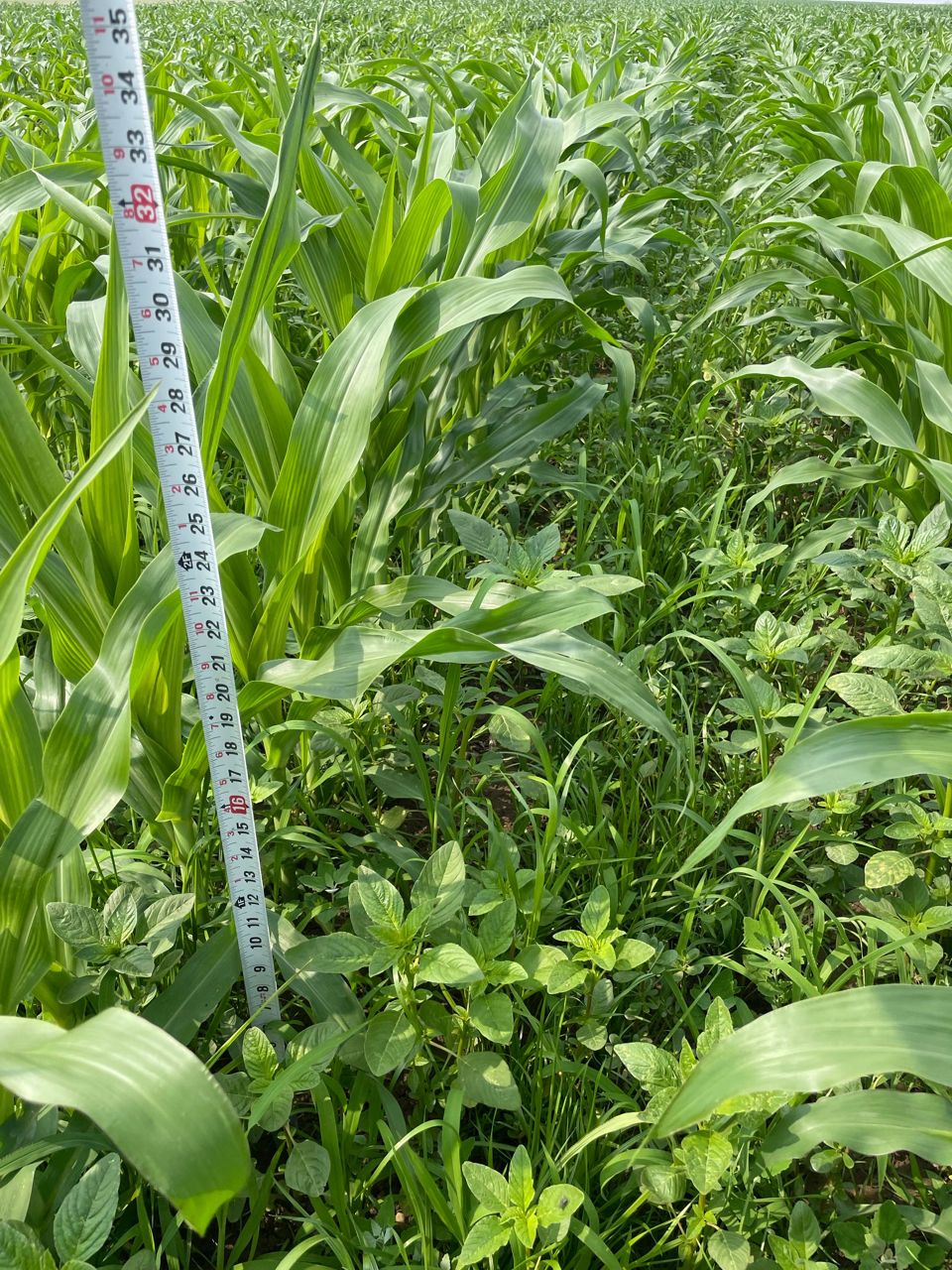
KEY LEARNINGS
- For this trial, the findings suggest that a PRE emergent weed control treatment can provide the highest yield potential possible and that the longer a farmer waits to control weeds, the greater the lost yield potential increases due to weed competition.
- The feasibility of using a PRE emergent herbicide program is dependent on many agronomic and environmental factors.
- Weather conditions for the growing season may have reduced the yield difference between treatments. Under dryer or droughty conditions, the yield difference between treatments would be expected to be higher.
- Even though adequate to excellent weed control was achieved with a one-pass program in this trial, it is always recommended to scout fields in case a second application is needed to control breakthrough weeds.
- Always consult with your local retailer and agronomist for the weed management options recommended for your region. Different weed species, tillage practices, soil types, and other factors help determine the best weed management program for each individual region.
- This trial should be conducted again next year to accumulate data on another unique growing season.
1223_333535
You may also like...
Here are some articles that may also be of interest to you